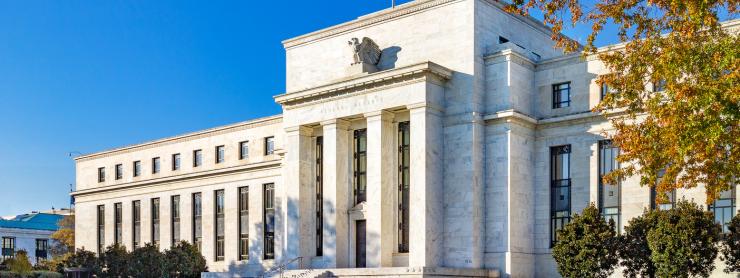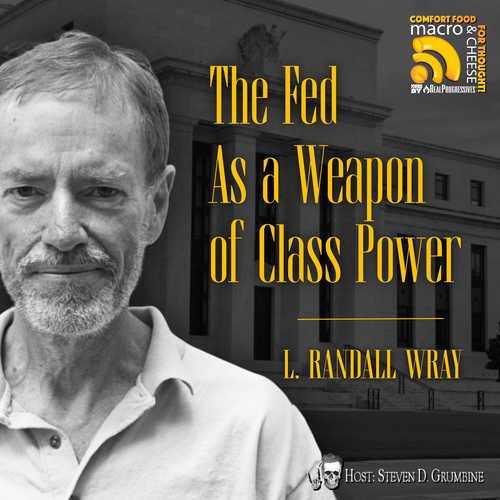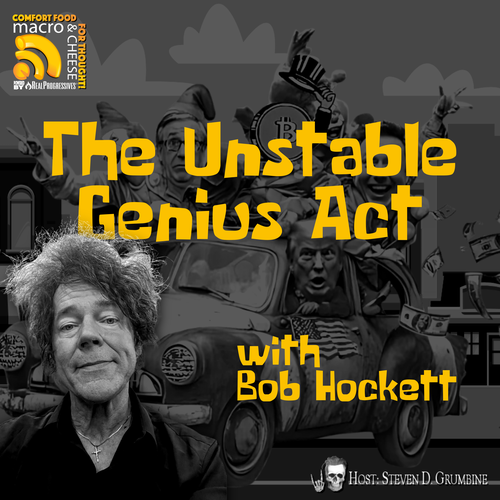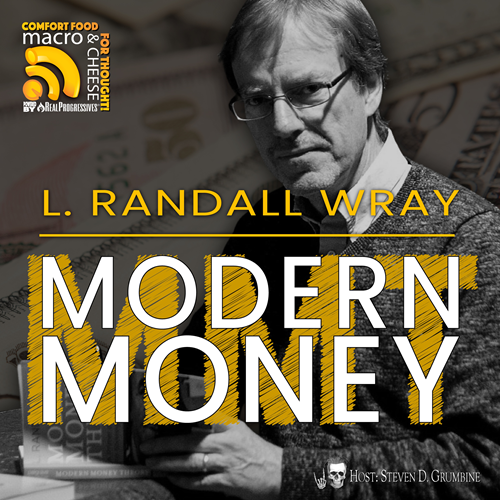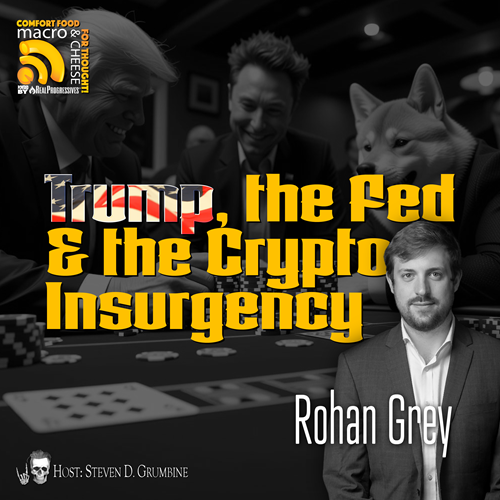Originally posted on January 11, 2014 at the New Economic Perspectives blog.
Coda: Is the Fed Independent of Influence?
In my two part series (here and here), I examined conventional views of (mostly) economists on the Fed’s supposed independence. What they focus on is the Fed’s independence from our elected representatives and as well on operational independence of the Treasury. The reason why they believe this is important is because the Fed is supposed to protect us—we can identify us as “money users”—from the danger that the “government” (Congress and Treasury), our “money issuers”, might conspire to degrade our currency by having the Fed “print money” to finance a profligate government. These “Weimar Worriers” are just certain that if a cabal of central bank, treasury and congress had their way, we’d be off and running to hyperinflation. Hence, thank god that our central bank is independent! Any meddling by Congress (or the Treasury) in the affairs of monetary policy making would be the final death knell for our Dollar.
I have argued in the series that the Fed is a “creature of the Congress”. In that sense, we should not see it as “independent” of Congress, which can use its law-making power (as well as other powers) to tell the Fed what to do. As Bernanke (and many others at the Fed have said) the Fed will do what Congress tells it to do. The Congress can, and has, changed the laws that the Fed operates under—as I pointed out in the previous posts. There never has been the kind of independence supposed by economists.
However, the Fed was set up to be free of the usual day-to-day political pressures, with lots of safe-guards put in place. For example, the lengthy terms that do not coincide with those of our President and other elected representatives ensure that appointed Fed officials are not “campaigning” at the same time that we are holding elections. (Indeed, commentary focused on the apparent “running” of Janet Yellen for Chair of the Fed—unusual behavior that looked more “political” than usual.) And with rare exceptions (Hello Ron Paul! Hi Bernie Sanders!) we do not see our politicians running on a platform promising to take over monetary policy-making.
The Congress and the Administration—in normal times—keep a “hands-off” approach with respect to telling the Fed what its “monetary policy” ought to be. Here we are defining “monetary policy” the way the Fed and most economists do: nowadays, that is the setting of the discount rate and the fed funds rate; during the Monetarist period, it was the setting of aggregate “money” targets (reserves or M1 and M2 growth targets). However, as I argued in Parts 1 and 2, in emergencies the Fed cooperates with the Administration to formulate policy. It is not a coincidence that the Fed kept rates low in WWI, WWII, and after the GFC.
If we were to define “monetary policy” much more broadly then it is clear that both the Congress and the Administration “interfere” frequently—in areas of regulation and supervision of banks, financial institutions, and financial instruments. Dodd-Frank continues in that tradition.
With regard to “operational independence” from the fiscal authorities, we have legislated constraints as well as adopted informal rules. However, upon inspection these turn out to have very little practical importance. While the Fed cannot buy Treasury debt directly, the Fed can lend reserves to banks, which then buy the Treasuries and can sell them on to the Fed without constraint. Importantly, the Fed targets the overnight interest rate, which reduces its degrees of freedom (it buys or sells Treasuries as necessary to hit the target). It is also the Treasury’s bank, and those in the Treasury as well as the Fed who are familiar with the operations deny that the Fed actually does—or would—refuse to clear the Treasury’s checks. Operational independence is a formality that doesn’t much matter.
And in the past when it was very important to ensure that fiscal policy could be smoothly run—as in WWI and WWII—the Fed acquiesced, keeping rates low on Treasury debt. There’s every reason to believe the Fed will do so again in the future should it be necessary. We also have the Fed’s unprecedented behavior since 2008, as it sought to keep rates extremely low “in the national interest”. That helped to keep interest service on the debt low in the aftermath of “Obama’s deficits”.
Some commentators have interpreted all of the above as a “whitewash” of the Fed’s relationship with private banking. Some have also tried to argue that the Fed is not really a creature of Congress—rather—the Fed is a “hybrid” with one foot in the private banking business and another in government. Both of these views are fundamentally wrong.
The Fed is a lender of last resort to the banking system; it always has been. This is an important aspect of its “public purpose”. The US tried operating a payments system in which private bank liabilities did not clear at par. That didn’t work. We tried operating a system that was subject to runs, relying only on the banks, themselves, to stop runs. When a financial crisis hit, it was all up to the Original JP Morgan to gather bankers into a room and lock the doors until they worked out a solution. That didn’t work well, either. Indeed that was the major impetus to creating the Fed in the first place (unlike the earliest central banks, which were created to provide government finance). And, yes, it was in large part the bankers’ idea to get a central bank. They convinced Congress to finally do something about the US monetary mess. Our history of financial crises stood out like a sore thumb in comparison with early-adopters of central banks. We had a financial system that was not ready for the 20th century.
There were big debates about how to design our system. The bankers wanted something like the Bank of England—private owned then (but later nationalized). Many in Congress wanted the US central bank to be housed in the Treasury—not a bad idea, in my view. In any event, Congress created the Fed and set it up with the “checks and balances” approach to governance that I described in Part 1 (following Bernie Shull’s great paper). That didn’t work, and overtime, Congress has asserted greater control.
Yes, private banks are nominal “owners” of regional banks. Really it is more of a “membership fee” since their “stock” in the Fed is nothing like normal equity shares. They join up and then get a return based on Fed profits. Profits above 6% go to the Treasury. Policy, however, is set by Congress. The power resides with Board of Governors, with narrowly defined monetary policy established at FOMC meetings.
And, yes, the Fed operates clearing for private banks. It lends when they’ve got liquidity problems. It approves mergers. It watches out for the banking system. And sometimes it acts like the Original JP Morgan when it brings bankers into a room, locks the door, and bangs their heads together until they hammer out a solution—as it did during the LTCM crisis.
But that doesn’t make the Fed a “hybrid”: it gets its mandate from Congress. Yes, the Fed “caters to” private banks in the sense that it is supposed to stop runs, and to lend to troubled banks. But Congress passes the laws that tell the Fed what to do, and can change them if it doesn’t like what the Fed did.
Some argue that the Fed is captured by Wall Street. Heck, I’ve argued that for years! So is the Treasury. So is the entire darned Administration of Obama, and that of Bush, Jr, and that of Clinton. We’ve got the best Government that Wall Street’s money could buy. I agree. That was not the issue I was discussing in the two part series. If the critics are trying to argue that is what they mean by the Fed being “independent” then they can also argue the Treasury is independent of government, as is the Obama Administration, as is the Supreme Court of the United States. They all work for Goldman Sachs and JP Morgan and and Citi and Bank of America and AIG, and so on. Or, in Timmy Geithner’s case, for Warburg Pincus. (Literally.) Fine.
They’ve got the Supreme Court claiming that corporations are people, too.
The first order of business when a new President is elected is to choose which Wall Street firm gets to run Treasury (usually it is Goldman Sachs, which also gets to run many of the treasuries in Europe and around the world). Our conspiracy theorists love to talk about the cabal of bankers running the Fed, but they completely ignore the Rubins, Summerians, Paulsons and Geithners at Treasury where there is a completely open and unashamed Wall Street cabal running the entire show.
If you want to call the Fed “hybrid” public and private, so is the Treasury. Indeed, so is Government Sachs, since it not only runs a bank but also holds many of the top positions in the US government. And in the governments of a number of other countries, too.
Fine and dandy, but that wasn’t the topic.
Finally, the question was raised: do I think that we ought to have an independent central bank? I can see an argument for some Fed independence from pork barrel politics. The Fed is a bank, and all banks have a magic porridge pot. One can imagine that pot-bellied politicians with cigars would love to have the Fed lending to their pork barrel projects. It is bad enough that Congress is pitching the pork—which actually requires budgeting and voting and Presidential signatures. What if a handful of “wise men” on the FOMC in Washington could shovel the pork? Hey, Chairman, I need some financing for a series of Trump Towers in my district!
Now, that is not really what the political independence debate is all about. There is the belief that what I described as the normal monetary policy (setting interest rates) is extremely important and needs to be free from political posturing. The fear is that politicos want low interest rates to prod economic growth so that they can go back to their districts and claim the credit, meanwhile inflation soars and we’ve got to buy wheelbarrows to truck worthless dollars to the grocery store. In my view that is all nonsense. Politicos do not have a pro-hyperinflationary constituency.
The true danger is always, has always been, will always be, in the opposite direction. Politicos hate inflation and do not mind unemployment. The unemployed do not contribute to campaigns and don’t vote much (except in Chicago where Mayor Daley pays them to do so and tells them who to vote for).
When Wall Street decides it wants hyperinflation, I’ll worry because it will hire all the politicians needed to get it. Until then, this is all a red herring. We do not need this kind of political independence because there’s zero chance the Fed and the Treasury and the Congress will team up to hyperinflate.
Me? I’d eliminate that kind of independence. Congress should mandate that the overnight rate ought to be set at 0 or 25 or maybe 50 basis points and left there forever. (Oooh, I know that will drive our hyperinflationary Weimar Worriers crazy.)
I think there is some argument for making some kinds of monetary policy—more broadly defined—behind closed doors and with independence. Deciding whether a troubled bank is troubled because it is insolvent or because it is illiquid is the kind of “monetary policy” decision that needs to be free of Congressional pressure. (If it is illiquid, lend; if it is insolvent, turn it over to the FDIC for resolution.) We saw what happened when the Keating Five Senators tried to protect Lincoln Savings and Loan from being resolved (luckily on the other end of that stick was my colleague Bill Black, who is like a bulldog when it comes to fighting corrupt senators, bankers, and regulators). Politicians always need money and banks and thrifts have the magic porridge pot, so elected representatives will always try to interfere with regulators and supervisors that go after a bank in “their” district. We have to insulate the Fed and the FDIC from that kind of interference.
But what the Fed did during the GFC bail-out of Wall Street stunk. It was disgusting. Congress should not, cannot, let that happen again. That is what my project is all about. We do not want the Fed to have that kind of political independence. My project team broke the story of the Fed’s $29 TRILLION in loan originations to save the blood-sucking vampire squids of Wall Street.[1] This wasn’t a liquidity problem. It was an insolvency problem, with the major banks massively insolvent because their top management had turned them into what Bill Black calls “control frauds”. The Fed should not have the political independence to try to save fraudulent and insolvent financial institutions. Maybe we should have bailed them out (I think not)—like we bailed out the auto industry. But that should be done by Congress, not by unelected officials at the Fed.
(To be clear, we have 4500 honest banks. We have a half dozen huge banks that are run as control frauds. Our financial system’s main problems can be found among those SDIs—systemically dangerous institutions. We will not get back our economy or our government until we close them.)
We need a central bank. It needs to serve the public purpose. It needs to be held accountable. We need to improve governance of the Fed. And we need to increase transparency. The Fed is a creature of Congress. It is up to Congress to improve democratic accountability, governance, and transparency of the Fed.
[1] See two annual reports of research conducted with the support of Ford Foundation Grant no. 1110-‐0184, administered by the University of Missouri–Kansas City. See: L. Randall Wray, 2012. “Improving Governance of the Government Safety Net in Financial Crises,” Research Project Report, April 9. http://www.levyinstitute.org/pubs/rpr_04_12_wray.pdf; and L. Randall Wray, 2013. “The Lender of Last Resort: A Critical Analysis of the Federal Reserve’s Unprecedented Intervention after 2007”, Research Project Report, April http://www.levyinstitute.org/publications/?docid=1739.
17 RESPONSES TO “THE GREATEST MYTH PROPAGATED ABOUT THE FED: CENTRAL BANK INDEPENDENCE (PART 3)”
- Sunflowerbio | January 11, 2014 at 12:08 pm |Thank you, Randall, for elucidating the workings of that most mysterious and least understood branch of government, the Federal Reserve. If, the big IF, that understanding were ever to penetrate Congress, we would be about half way home to getting our monetary and fiscal house in order. The other half would be getting Congress to understand the role of the sovereign currency issuer.
- Pingback: The Greatest Myth Propagated About The FED: Cen…
- Stephen | January 11, 2014 at 2:24 pm |So ultimately what I take from all of this is that campaign finance reform is the number one thing we need to focus on. All other issues (including governance and oversight of the fed) are moot until we get money out of politics or we restore political independence from large donations. This was an excellent piece Mr.Wray thank you I have to ask is this the only way that central banking has been done? Are the other central banks across the world similar?
- LRWray | January 11, 2014 at 8:44 pm |I’ve come to believe that “financialization” is the natural trend of capitalism. It can be slowed, maybe even stopped, but it takes diligence. Yes, some countries still have governments and economies that are not run by the financial sector. It is difficult but maybe not impossible.
- Stephen | January 12, 2014 at 12:57 pm |The price of freedom is eternal vigilance.
- Stephen | January 12, 2014 at 12:57 pm |The price of freedom is eternal vigilance.
- reserveporto | January 13, 2014 at 1:08 pm |“money out of politics”This doesn’t make much sense to me. Politics has tremendous power and is a very important economic activity. It is an activity that people want done, so monetizing it seems a good way to make certain it gets done. Personally, I’d prefer to borrow Mayor Daley’s playbook and make certain that everyone gets a piece of the political action, not just the media and the top candidates.
- Stephen | January 13, 2014 at 8:23 pm |“Politics has tremendous power and is a very important economic activity”That’s part of the problem. Politics should not entirely or wholly be captured by the demands of economic activity. In fact in many areas it still isn’t. It’s a matter of what you want to leave up to individuals and groups functioning as “economic activity” and what you want the state to have responsibility for. So for instance we don’t want to leave the production of nuclear weapons to the private sector for good reasons obviously.
- Stephen | January 13, 2014 at 8:23 pm |“Politics has tremendous power and is a very important economic activity”That’s part of the problem. Politics should not entirely or wholly be captured by the demands of economic activity. In fact in many areas it still isn’t. It’s a matter of what you want to leave up to individuals and groups functioning as “economic activity” and what you want the state to have responsibility for. So for instance we don’t want to leave the production of nuclear weapons to the private sector for good reasons obviously.
- LRWray | January 11, 2014 at 8:44 pm |I’ve come to believe that “financialization” is the natural trend of capitalism. It can be slowed, maybe even stopped, but it takes diligence. Yes, some countries still have governments and economies that are not run by the financial sector. It is difficult but maybe not impossible.
- Orlando | January 12, 2014 at 2:59 am |Just a thought on your thinking. Before 1913, the people of America owned the money supply in the form of a redeemable gold standard. You own gold, you own your money. The people consistently refused to bail out banks that leveraged gold. The fed took ownership from the people and gave it to the banks, so now the people are rentiers of their own money and behave accordingly resulting in low savings, excessive consumption and financial insecurity. What can change this? If the FED were ‘owned’ by the people again say through democratically electing the members, the corruption would spread from congress to the FED but ultimately the people decide whether or not they want to own their money or are happy with a fiat economy. Democratically, the people might ultimately make the FED useless by defiatizing the economy. This is the ultimate FED ‘independence’. I have not heard any politician speak the heresy of having a democratic devolution of the FED. Senator Paul and Representative Grayson come close, but their approach is very limited to additional control by congress.
- LRWray | January 12, 2014 at 12:10 pm |No, Orlando. It never worked that way. That’s an imaginary past. It actually was a Cross Of Gold. And of bank notes (of which majority were probably counterfeit), with banks crashing all the time. Big runs. Big deflations that sank regular folk. A de-fiatized economy would sure benefit the gold-hoarders! A GoldBug’s wetdream. But that, too, is an imaginary future.
- Stephen | January 12, 2014 at 12:59 pm |If you talk to Schiff or Marc Faber or Ron Paul they seem to believe it sincerely. Are they deluded or just sales people? Or both?
- Philippe | January 12, 2014 at 4:17 pm |both.
- LRWray | January 12, 2014 at 6:41 pm |Uhhm is that a trick question? All are selling their book, alternatively, all are certifiable.That said, I do have some respect for Ron Paul for standing with Bernie Sanders to demand transparency, and for standing up against unnecessary Bush Wars and Obama Wars.
- Stephen | January 13, 2014 at 10:23 am |If I understand Pauls position correctly the idea is that if we were on the gold standard we couldn’t fund these wars overseas and the entire empire. I don’t think that bears out historically though. Could also be misunderstanding his position on my part.
- Stephen | January 13, 2014 at 10:23 am |If I understand Pauls position correctly the idea is that if we were on the gold standard we couldn’t fund these wars overseas and the entire empire. I don’t think that bears out historically though. Could also be misunderstanding his position on my part.
- Philippe | January 12, 2014 at 4:17 pm |both.
- Orlando | January 12, 2014 at 4:37 pm |Perhaps you’re right. I can only speak from personal experience. My net worth was in real estate throughout the period leading to the financial crisis. Naturally, I lost 90% of it, so my investment, even though everyone said was safe, was risky and illiquid. If I had held the money in gold, I would have made close to 1800%. Today, my prudence STILL does not include the metal, because the SNB is in severe trouble and is hedging it’s gold with the middle east cartels, pushing the prices down substantially. Would this change with the removal of fiat money? Maybe. All I can say is this, I’m unleveraged, so when investors with leverage are in my camp I make x% return while the leveraged investors make Lx% return, their return is multiplied by the leverage they ‘own’ from me, usually 13 to 60 times. However, when the market turns against me, for every dollar I have invested, there are L times dollars betting against me. This is as hopeless a situation as one can imagine. The people have no hope in this system and only the insiders can come out ahead. Worse, when the insiders fail in their bets, we bail them out with our money. The math is unmistakable, you can calculate it easily by looking at the prices of commodities and stocks over the last four years as the economy is slowly being releveraged.
- LRWray | January 13, 2014 at 5:01 pm |I was in US Treasuries. No losses. If you’d been reading my writings, you’d know we were in a real estate bubble since 2000. However, as they always say, past performance is no indication of future losses! Be careful out there.
- LRWray | January 13, 2014 at 5:01 pm |I was in US Treasuries. No losses. If you’d been reading my writings, you’d know we were in a real estate bubble since 2000. However, as they always say, past performance is no indication of future losses! Be careful out there.
- Stephen | January 12, 2014 at 12:59 pm |If you talk to Schiff or Marc Faber or Ron Paul they seem to believe it sincerely. Are they deluded or just sales people? Or both?
- LRWray | January 12, 2014 at 12:10 pm |No, Orlando. It never worked that way. That’s an imaginary past. It actually was a Cross Of Gold. And of bank notes (of which majority were probably counterfeit), with banks crashing all the time. Big runs. Big deflations that sank regular folk. A de-fiatized economy would sure benefit the gold-hoarders! A GoldBug’s wetdream. But that, too, is an imaginary future.
- Brian | January 13, 2014 at 7:54 pm |Great article as always Mr Wray.Agreed, though I wanted to deny it for years, it does seem left to it’s own devices capitalism leads to financial take over. I don’t know if we have another 1930s coming up, but if so maybe we can “reset” like last time, armed with new knowledge and research to actually maintain a restrained, regulated capitalist system like post WWII
- Curt Layman | January 14, 2014 at 12:42 pm |You wrote that profits above 6% percent go to the treasury. Can you explain this further, six percent of what?
I have to wonder why we should accept a government that allows the Fed to make a six percent profit?
What have they actually done that could not be done by the treasury?
Another thing that troubles me, which was not directly addressed in this three part series but I think it is closely related is the accounting that goes in to determining the official national debt. What does the Congress claim that it is now 7 billion?, 9 billion?, I lost track because I do not pay attention any more as it seems to phoney?
If I understand correctly every penny of deficit spending is accounted for by an interest paying security of some kind or other. An obvious implication of that is every penny of government debt creates an asset.
Not neccissarily a government asset but since a lot of infrastructure projects gets built the government and are owned by the government it would seem to that the government is not counting its assets when it claims that the national debt is very high. Does anyone share my impression of this situation?
I would think that the important question is not what the level of government debt is but what was the money invested in. If it was invested in Iowa class battleships then we will have a poorer future but if it was invested in tidal electricity then we all benifit.
A final thing about deficits I want to throw out to see if other agree with me is deficit spending helps the country that does it at the expense of other countries that do not or do it less? I think this because currenices are accepted world wide. A country that runs a deficit will not spend all of the deficit in its own country. Some portion of it will be used to buy raw materials or finished goods in other countries. Would that not mean that those resources or goods will be allocated differently than if (financial) funds had not been created by a government? I understand that the classical idea is that over time those governments that cheat more will see their currency devalued as they run trade deficits. I do remember when one one dollar bought four Deutsch Marks. Now if there were a DM a dollar would buy a lot less than two DM . Still my intuition tells me that US deficit spending has been a factor in getting the resources of the Africa, Asia, and Latin America shipped to American ports rather than being used for local developement.

